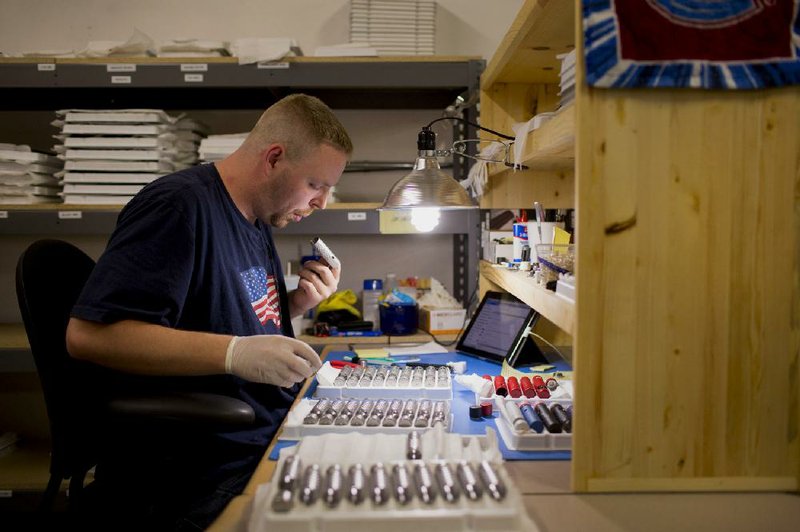RICHMOND, Va. - Smokers are increasingly turning to battery-powered vaporizers to get their nicotine fix. They’re about to find out what federal regulators have to say about them.
The Food and Drug Administration will propose rules for the devices as early as this month. The rules will have big implications for a largely unregulated industry and its legions of customers.
Regulators aim to answer the question posed by Kenneth Warner, a professor at the University of Michigan School of Public Health: “Is this going to be the disruptive technology that finally takes us in the direction of getting rid of cigarettes?”
The FDA faces a balancing act. If the regulations are too strict, they could kill an industry that offers a hope of being safer than cigarettes and potentially helping smokers quit them. But the agency also has to be sure the nicotine delivery devices really are safer and aren’t hooking children on an addictive drug.
“This is a very complicated issue and we must be quite careful how we proceed,” said David Abrams, executive director of the Schroeder Institute for Tobacco Research and Policy Studies at the American Legacy Foundation, in a recent panel discussion. “I call this sort of the Goldilocks approach. The regulation must be just right. The porridge can’t be too hot, and it can’t be too cold.”
Members of Congress and several public health groups have raised safety concerns, questioned marketing tactics and called on regulators to address those worries quickly.
The devices are plastic or metal tubes, usually the size of a cigarette, that heat a liquid nicotine solution instead of burning tobacco. That creates vapor that users inhale. Smokers like them because the nicotine-infused vapor doesn’t contain the thousands of chemicals, tar or odor of regular cigarettes. Some smokers use the devices as a way to quit smoking tobacco, or to cut down.
The industry started on the Internet and at shopping-mall kiosks and has rocketed from thousands of users in 2006 to several million worldwide who can choose from more than 200 brands. Sales are estimated to have reached nearly $2 billion in 2013.
Tobacco company executives have noted that they are eating into traditional cigarette sales. Their companies have jumped into the business.
There’s not much scientific evidence showing the devices help smokers quit or smoke less, and it’s unclear how safe they are.
The FDA is likely to propose restrictions that mirror those on regular cigarettes, experts say.
The most likely of the FDA’s actions will be to ban sales to people under 18. Many companies already restrict sales to minors, and more than two dozen states already have banned selling the devices or liquid nicotine to young people.
Federal regulators also are expected to set product standards and require companies to disclose their ingredients and place health warning labels on packages and other advertising.
Where the real questions remain is how the agency will treat the thousands of available flavors. While some companies are limiting offerings to tobacco and menthol flavors, others are selling candy like flavors such as cherry and strawberry.
Flavors other than menthol are banned for regular cigarettes over concerns that flavored tobacco targets children.
Regulators also must determine if they’ll treat various designs differently.
Some, known as “cig-alikes,” look like traditional cigarettes and use sealed cartridges that hold liquid nicotine. Others have empty compartments or tanks that users can fill themselves. The latter has raised safety concerns because ingesting the liquid or absorbing it through the skin could lead to nicotine poisoning. To prevent that, the FDA could mandate child-resistant packaging.
The FDA also will decide the grandfather date that would allow the products to remain on the market without approval from regulators - a ruling that could force some, if not all, of the devices to be pulled from store shelves while they are evaluated by the agency.
The regulations will be a step in a long process that many believe will ultimately end up being challenged in court.
The industry expects regulations, but hopes they won’t force products off shelves and will keep the business viable.
Manufacturers especially want the FDA to allow them to continue marketing and catering to adult smokers. They believe the devices present an opportunity to offer smokers an alternative and, as Njoy Inc. Chief Executive Officer Craig Weiss said, make cigarettes obsolete.
“FDA can’t just say no to electronic cigarettes anymore. I think they also understand it’s the lesser of the two evils,” said James Xu, owner of several Avail Vapor shops, whose wooden shelves are lined with vials of liquid nicotine.
Business, Pages 25 on 04/23/2014
